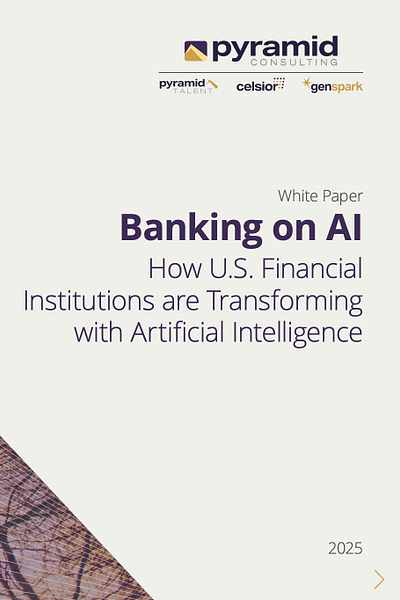US Banks Big Gamble On AI: $97 bn and Counting
While it seems like a safe bet, no one knows how this will play out.
This is my daily post. I write daily but send my newsletter to your email only on Sundays. Go HERE to see my past newsletters.
HAND-CURATED FOR YOU
US banks are leading the world in AI investment, with investments projected to exceed $97 billion by 2027, and this white paper lays out how AI is a good bet but not guaranteed.
By now, the top use cases for AI in banks are well understood: customer experience, fraud prevention, credit analysis, risk management, and process automation. They are well explained in the paper, and some of the examples are great.
What is less understood is how the competitive landscape between traditional banks and fintech like Chime and SoFi will play out, and to me, this is the most interesting part of this paper.
New digital challengers have a substantial advantage over incumbents with cloud-native systems, ready access to data, and teams hard-wired to innovate.
By comparison, incumbent banks are constrained by legacy systems, greater fear of reputational damage, and innovation teams that move at a snail’s pace.
The reality is that, despite the considerable investment, there is no guarantee that incumbents will see improvements that offset their substantial investment. Even more critically, if they do improve, will they gain enough relative to surpass or match their more agile digital challengers?
That’s why I call AI a gamble. Granted, banks, both new and old, are all at the same poker table and have no choice but to place bets. However, there are no guarantees that they have a winning hand.
So far, we’re in the early rounds, and the spin put on AI by banks is as positive as their PR departments can make it. That won’t last, and I expect by the end of this year, we’ll start to read about some major bets by incumbents gone sour.
This isn’t blaming AI or indulging in anti-AI sentiment. The reality is that not every incumbent or neobank will hit the jackpot.
👉The Race for AI Adoption at Traditional Banks vs. Fintechs
🔹 Traditional banks
Operational efficiency: Traditional banks are increasingly integrating AI
to streamline internal processes, automate routine tasks, and enhance risk
management. For instance, JPMorgan Chase has developed an AI-based chatbot
called LLM Suite to assist employees in asset and wealth management.
Customer experience: Banks are utilizing AI to improve customer interactions
through personalized services and chatbots. However, the implementation pace
is often hindered by legacy systems and stringent regulatory frameworks.
Risk management: AI is employed to detect fraudulent activities and assess
credit risks, enhancing the security and reliability of banking operations.
🔹 Fintechs (neobanks)
Innovation and agility: Fintechs, being inherently agile, rapidly develop
AI-driven products and services. They often operate with fewer regulatory
constraints, allowing for quicker innovation cycles.
Customer-centric solutions: Fintechs leverage AI to offer personalized financial
products, real-time analytics, and user-friendly interfaces, catering to the
evolving demands of tech-savvy consumers.
Product development: AI enables fintechs to create innovative solutions such as automated investment platforms, personalized financial advice, and efficient
loan processing systems.






